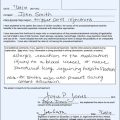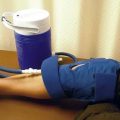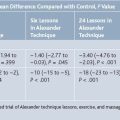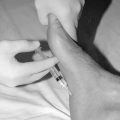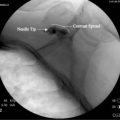22 Mind Body Therapies and Posttraumatic Stress Disorder
Post Traumatic Stress Disorder: An Overview
Discussions of the whole psychological concept of post traumatic stress disorder began when veterans returned from the Vietnam War. However, Sir William Osler, the Father of American Medicine, in his book, Aequanimitas,1 talked one hundred years ago about ordinary illnesses being due to the stress and strain of daily life. Hans Selye later brought to our attention the fact that virtually all illness is the result of stress.2 Indeed, having worked with over 30,000 individuals who had failed conventional medicine, many of them with chronic pain and all of them with chronic depression, it is my impression that virtually all illnesses are ultimately the result of unresolved stress, which frequently began in childhood. In other words post traumatic stress appears to be the root cause of illness. Situations that were perceived as either childhood abuse or abandonment impact an individual for life. Abuse tends to cause anger and abandonment leads to depression in adulthood. The extent of anger or depression varies significantly among individuals.
Posttraumatic stress disorder is generally considered a more serious reaction that can occur almost instantly after major trauma or disaster. The most striking features of PTSD are flashbacks, recurrent memories and reliving of specific traumatic experiences. These same features appear to be in most patients with chronic depression or anxiety. These individuals can have rapidly developing emotional outbursts and often extremely bizarre behavior sometimes leading to rampages of murder or suicide. Indeed, it is these extremes that are the sine qua non of PTSD. If we look at the number of symptoms that are often part of posttraumatic stress disorder, they include3:
PTSD Diagnosis
The difficulty in establishing the diagnosis of PTSD has led to the development of a PTSD checklist (PCL). This checklist was developed from a population of 40 motor vehicle accident victims and sexual assault victims.4 The Iraq and Afghanistan wars have led to a striking increase in the number of soldiers diagnosed with PTSD.
As one might expect, not everyone exposed to what appears to be the same intensity of trauma develops posttraumatic stress disorder. In one small study, 51 individuals who suffered a physical injury due to a traumatic event were assessed 1 week and 6 months after the trauma. Only 13 of these 51 (25.5%) met the posttraumatic stress disorder diagnostic criteria at follow-up. Those who did develop PTSD, had “higher levels of peritraumatic disassociation and more severe depression, anxiety, and intrusive symptoms” at the 1 week assessment. This peritraumatic disassociation at that initial week was a major factor in whether they later developed PTSD.5 In another study of 72 female rape victims versus 86 female victims of nonsexual assault, there were two patterns of posttraumatic symptoms, one being characterized as posttraumatic stress disorder and the second as a phobic reaction.6
Positron emission tomography (PET) has allowed perhaps the most clinically relevant view of brain function in PTSD. In 16 women with histories of childhood sexual abuse, 8 had current PTSD and 8 did not. When asked to recall or mentally recreate a traumatic event, both groups exhibited regional cerebral blood flow increases in the orbital frontal cortex in the anterior temporal poles. However, those with PTSD had a much greater increase in cerebral blood flow in those areas and those without PTSD had a greater decrease in cerebral blood flow in the left inferior frontal cortex. The non-PTSD had greater increases in the anterior cingulate gyri.7 Single photon emission computed tomography (SPECT) scans also have offered some insights into the physiologic changes apparent in PTSD patients. Fourteen veterans with PTSD, 11 combat control subjects and 14 normal subjects were all studied with the SPECT scans in sessions at least 48 hours apart. In one exposure, the individuals experienced white noise and in the other, they experienced exposure to combat sounds. Activation in all three groups occurred in the anterior, cingulate, and middle prefrontal gyri but activation in the region of the left amygdala and nucleus accumbens was found only in PTSD patients. Deactivation was found in all three groups in the left retrosplenic region.8
It appears that the PTSD individuals have regional differences in brain activity, at least during recall of their trauma. As one might expect, those individuals diagnosed with PTSD have a high incidence (80%) of having at least one other comorbid psychiatric diagnosis.9 It may be that the total lifelong cumulative stress to which individuals have been adversely subjected earlier in life predisposes them to PTSD. In one study of 131 Vietnam male veterans who had taken the Minnesota Multiphasic Personality Inventory (MMPI) in college had readings that were within the normal range, but no one scale predicted the development of stress from combat exposure. Hypochondriasis, psychopathic deviant, masculine femininity, and paranoia scales predicted PTSD symptoms, as did depression, hypomania, and social introversion and these effects were dominant despite the degree of combat exposure. The conclusion is similar to individuals in general. “Pre-military personality can affect vulnerability to lifetime PTSD symptoms in men exposed to combat.” This is thought to be true in individuals exposed to any trauma.10 In the author’s experience treating thousands of patients with chronic pain that failed all conventional therapy, at least 75% had elevations on depression, hypochondriasis, and hysteria, and an additional 15% had elevations on psychopathic deviant, masculine femininity, and paranoia.11 The most intense problem is the pattern of replaying many past traumatic events. Many of them can never remember a happy event from childhood. The main difference in these individuals and those with PTSD is that the chronic pain and depressed patients do not have the erratic episodes of intense emotional behavior. They are more passive.
Finally, there has been an attempt to evaluate the role of shame, anger, and childhood abuse in victims of violent crime. One hundred fifty-seven victims of violent crime were interviewed 1 month after the crime and 6 months later. It was found that shame and anger were the only independent predictors of PTSD at 1 month and shame was the only independent predictor of PTSD at 6 months. The authors conclude that both shame and anger play important roles in the development of at least crime-related PTSD and that shame is the perpetuator in the subsequent course of symptoms.12
Another study supports the thesis that it is the childhood background that may determine one’s propensity to develop PTSD. In a telephone interview survey of 4023 adolescents aged 12 to 17 years, 16% of boys and 19% of girls met the criteria for at least one diagnosis of either PTSD, major depressive episode (MDE), or substance abuse/dependence (SA/D). The 6-month PTSD prevalence was 3.7% for boys at 6 months and 3% for girls, whereas, that of MDE was 7.4% for boys and 13.9% for girls. In the 12-month SA/D, prevalence was 8.2% for boys and 6.2% for girls. PTSD was more likely to be a comorbid condition than was MDE or SA/D. These results generally support the hypothesis that exposure to interpersonal violence (i.e., physical assault, sexual assault, or witnessed violence) increases the risk of the development of these major psychiatric disorders.13
Hans Eysenck’s Work on Anger and Depression
Eysenck discovered over two decades that approximately 75% of the individuals who died of cancer were the lifelong hopeless, 15% were angry, and 9% were both. Only 0.8% of those who died of cancer were autonomous. Additionally, approximately 75% of those who died of heart disease were lifelong angry, 15% were lifelong depressed, and 9% were lifelong both. Overall, the vast majority of the individuals who died in only twenty years were chronically angry, depressed, or both.14 These findings have significant implications for PTSD patients, who suffer even more intense anger, depression, or both.
Electromagnetic Dysthymia and PTSD
Whatever the circumstances that predispose an individual to posttraumatic stress disorder, treatment for this particular difficult problem is primarily one for the field of mind-body medicine. Veterans have a high incidence of traumatic physical injury as well as psychological trauma. Thus, pain is common as a comorbid condition in these PTSD patients. In general, pain should always be treated when possible with appropriate correction of the physical or physiological cause. When such treatment does not lead to resolution of the pain within 6 months, it becomes a chronic pain syndrome. In the chronic pain syndrome, one should always consider procedures such as transcutaneous electrical nerve stimulation, acupuncture, physical exercise, and massage. In the author’s experience in working with more than 30,000 chronic pain patients, the most important long-term success have been achieved when these procedures are integrated with mind-body medicine. Many of these chronic pain patients fall into the category known as electromagnetic dysthymia. It is thought that these individual’s have brains with erratic electrical systems. Individuals with this disorder have the following characteristics15:
It is the author’s experience that PTSD patients have these abnormalities.
Mind Body Therapies and PTSD
Mind Body Medicine: History and Overview
Today’s concept of mind body medicine evolved in the early 1970s from the humanistic psychology movement. Contributors to this movement included early biofeedback work by Dr. Elmer Green and his wife, Alyce, and the meditation and relaxation studies of Dr. Herb Benson. As early as 1964, Dr. George Solomon had begun his work on psychoimmunology, but the concept did not take off until Dr. Robert Ader expanded this work to the concept of psychoneuroimmunology in 1970.16,17 It was the discovery of endorphins and the work of Dr. Candace Pert that laid a solid chemical foundation for the concept.18
Mesmerism itself was the first major development in the pre-modern prelude to today’s mind-body medicine. In the early 20th century, Emile Coue emphasized that “imagination” always wins in a conflict between “imagination and will.” Coue was famous for his statement, “Every day in every way I am getting better and better.” This statement was reported to cure thousands of people.19 The “separation” of mind and body is often said to have originated with Rene Descartes. Prior to his contributions, medicine, science, philosophy, and spirituality were commonly considered aspects of the whole person. With his influence in the 1600s, the separation of mind and body occurred—with mind being the purview of religion and metaphysics and body being the purview of science and medicine. In the late 18th century, Anton Mesmer began the trend to reexamine the connection of body and mind. Although rejected by most of his contemporaries, Mesmer’s work, said by Benjamin Franklin to be only a suggestion of the effect of the mind, spawned the concept of hypnosis, which was introduced by James Braid and James Eisdale after Dr. John Elliotson demonstrated in the 1840s that surgery could be performed on mesmerized patients. In 1872, Dr. Daniel Hack Tuke published the first major treatise on mind-body medicine in London. Tuke emphasized that the mind acts on the body through intellect, emotions, and volition. He considered that special and general sensations were influenced by mind, intellect, and volition, so he excluded these from his discussion. Conversely, he quotes Unser, who in 1771 wrote, “Expectation of the action of a remedy often causes us to experience its operation beforehand. This is also one of the earliest statements of the placebo effect.
Relaxation for Stress Illnesses
In 1912, Dr. J.H. Schultz of Germany had begun a specific form of self-hypnosis called autogenic training. His first book was published in 1932. By 1969, the six volumes on autogenic therapy were published by Schultz and Luthe.20 With some 2800 scientific references, they reported that 80% of “psychosomatic” illnesses were adequately treated with autogenic training. Additionally, athletes, business people, and students who practiced autogenic training markedly improved performance.
In the 1960s, Dr. Abraham Maslow and Dr. Carl Rogers began the reintegration of spirit and mind, founding humanistic psychology. Dr. Roberto Assagioli meanwhile had integrated all of his concepts, as well as Carl Jung’s concepts of symbology, into his technique of psychosynthesis. In 1970, Dr. Elmer Green and his wife, Alyce, introduced the concept of autogenic feedback training which has since become the foundation for biofeedback training. Their earliest work demonstrated that 84% of migraineurs and 80% of patients with hypertension were remarkably improved and adequately controlled with temperature biofeedback training. Since that time, it has been demonstrated that most physiologic responses, which can be measured and fed back to the patient visually or audibly, are capable of being brought under voluntary control.21
In the 1970s, Dr. Herbert Benson first reported on the physiologic homeostatic benefits of transcendental meditation and later recognized that the basic benefit was deep relaxation, soon to become known as the “relaxation response.” Benson’s work replicated what Jacobson had shown 50 years earlier. Most striking was Benson’s demonstration that individuals who performed 20 minutes of deep relaxation twice a day had a 50% decrease of catecholamine production and insulin requirement for the entire 24-hour period.
Major Clinical Applications of Mind-Body Medicine
Electromagnetic Dysthymia
EMD is a generalized disorder of chronic fatigue, anxiety, depression, and a weakened immune system.22 In severe cases it would be called posttraumatic stress disorder. EMD is often misdiagnosed and goes under the rubric of environmental allergies, candidiasis, chronic fatigue, ME (myalgic encephalitis) in the United Kingdom, or RED syndrome (RNase-L defect). These problems in the author’s experience are associated with deficiency in DHEA, magnesium, and essential amino acids, especially tryptophan and taurine. Most significantly, depressed patients, even those without PTSD, appear to have the following:
Treatment Protocol for EMD and PTSD
In general, at least 85% of patients with these disorders improve with the following protocols:
Individual mind-body therapies may be useful for those with far less serious problems than PTSD. For example, in the author’s experience, for those with ADHD, lithium orotate and photostimulation may be adequate and lithium orotate at dosages of 45 mg per day is helpful in virtually all mood disorders, including PTSD. For migraines, temperature biofeedback is effective 84% of the time. These individuals also may respond well to stimulation with the Liss CES, or to avoidance of wheat, corn, eggs, milk, citrus, peanuts, and wine. They should always avoid aspartame.
For rheumatoid arthritis patients, the entire protocol may be helpful. Additionally, stimulation with human DNA frequencies of 54 to 78 GHz applied with the SheLi TENS to 12 specific acupuncture points, called the Ring of Fire, has relieved the symptoms in 70% of RA patients who have failed conventional approaches. This approach has also been 80% effective in diabetic neuropathy.23 Epileptics are commonly deficient in magnesium and taurine and may respond to these supplements. Electroencephalogram (EEG) biofeedback training is also useful.24,25 Hypertension is often controlled with training in temperature biofeedback. Timed-release L-arginine and magnesium may also be of benefit.
Interface with Other Complementary and Alternative Modalities
Ultimately, as Sir William Osler said more than 100 years ago, “More important than what the physician does, is the patient’s belief and the physician’s belief in what the physician does.” Benson, for instance, demonstrated that every 20th century treatment for angina pectoris, when subjected to double-blind controls was no better than placebo. The recent article “The Emperor’s New Drugs” has emphasized the remarkably minimal effect of antidepressants compared with placebo.26 Faith and belief appear to be key elements in all therapy. A positive attitude not only improves outcome but also positively affects quality of life. Even outcome of surgery is positively influenced by proper mental preparation. Ultimately, to a significant degree, the mind-body connection influences all therapy.
Research Summary and Conclusion
1. Blizzard S.J., Kemppainen J., Taylor J. Posttraumatic stress disorder and community violence: An update for nurse practitioners. J Am Acad Nurse Pract. 2009;21(10):535-541.
2. Monson C.M., Taft C.T., Fredman S.J. Military-related PTSD and intimate relationships: From description to theory-driven research and intervention development. Clin Psychol Rev. 2009;29:707-714.
3. Feczer D., Bjorklund P. Forever changed: posttraumatic stress disorder in female military veterans, a case report. Perspect Psychiatr Care. 2009;45(4):278-291.
4. Gill J.M., Saligan L., Woods S., Page G. PTSD is associated with an excess of inflammatory immune activities. Perspect Psychiatr Care. 2009;45(4):262-277.
5. Amstadter A.B., Nugent N.R., Koenen K.C. Genetics of PTSD: Fear conditioning as a model for future research. Psychiatr Ann. 2009;39(6):358-367.
6. Lommen M.J., Restifo K. Trauma and posttraumatic stress disorder (PTSD) in patients with schizophrenia or schizoaffective disorder. Community Ment Health J. 2009;45:485-496.
7. Street A.E., Vogt D., Dutra L. A new generation of women veterans: Stressors faced by women deployed to Iran and Afghanistan. Clin Psychol Rev. 2009;29:685-694.
8. Brand B.L., Classen C.C., McNary S.W., Zaveri P. A review of dissociative disorders treatment studies. J Nerv Ment Dis. 2009;197(9):646-654.
9. Vasterling J.J., Verfaellie M., Sullivan K.D. Mild traumatic brain injury and posttraumatic stress disorder in returning veterans: Perspectives from cognitive neuroscience. Clin Psychol Rev. 2009;29:674-684.
10. Schnurr P.P., Lumney C.A., Bovin M.J., Marx B.P. Posttraumatic stress disorder and quality of life: Extension of findings to veterans of the wars in Iraq and Afghanistan. Clin Psychol Rev. 2009;29:727-735.
11. Shin L.M., Handwerger K. Is posttraumatic stress disorder a stress-induced fear circuitry disorder?. J Trauma Stress, 22. 2009:409-415.
12. Brewin C.R., Lanius R.A., Novac A., et al. Reformulating PTSD for DSM-V: Life after criterion A. J Trauma Stress. 2009;22:366-373.
13. Koenen K.C., Amstadter A.B., Nugent N.R. Gene-environment interaction in post-traumatic stress disorder: An update. J Trauma Stress. 2009;22:416-426.
14. Peterlin B.L., Katsnelson M.J., Calhoun A.H. The associations between migraine, unipolar psychiatric comorbidities, and stress-related disorders and the role of estrogen. Curr Pain Headache Rep. 2009;13(5):404-412.
15. Babson K.A., Feldner M.T. Temporal relations between sleep problems and both traumatic event exposure and PTSD: A critical review of the empirical literature. J Anxiety Disord. 2010;24:1-15.
16. Walsh D.S. Interventions to reduce psychosocial disturbance following humanitarian relief efforts involving natural disasters: An integrative review. Int J Nurs Pract. 2009;15(4):231-240.
17. Asmundson G.J., Katz J. Understanding the co-occurrence of anxiety disorders and chronic pain: State-of-the-art. Depress Anxiety. 2009;26(10):888-901.
18. Litz B.T., Stein N., Delaney E., et al. Moral injury and moral repair in war veterans: A preliminary model and intervention strategy. Clin Psychol Rev. 2009;29:695-706.
19. Sundin J., Fear N.T., Iversen A., et al. PTSD after deployment to Iran: Conflicting rates, conflicting claims. Psychol Med. 2010;40:367-382.
Description of Landmark Studies/Books
1. Jacobson E. Progressive relaxation: A physiological and clinical investigation of muscular states and their significance in psychology and medical practice 1974. University of Chicago Press. Original Copyright 1929.
2. Luthe W., Schultz J.H. Autogenic Therapies, Vols 1-6. New York: Grune and Stratton. 1969.
3. Selye H. The physiology and pathology of exposure to stress: A treatise based on the concepts of the general adaptation syndrome and the diseases of adaptation. Montreal: ACTA, Medical; 1950.
4. White L., Tursky B., Schwartz G.E. Theory, Research and Mechanisms. New York: Guilford Press; 1985.
5. Pavlov I.P. Conditioned Reflexes. Translated by Anrap GV. Oxford University Press; 1927.
6. Benson H., Beary J.F., Carol M.P. The relaxation response. Psychiatry. 1974;37:37-46.
7. Goleman D., Gurin J. Mind-Body Medicine. Yonkers, New York: Consumer Reports Books; 1993.
8. Reich W. The Discovery of the Orgone. Translated by Wolfe TP. New York: Noonday Press; 1971.
9. Tuke DH. Illustrations of the influence of the mind upon the body in health and disease. Elibron Classics. Adamant Media Corporation. Recognized as the first major book in the field of mind-body medicine, this classic is a most valuable resource.
10. Damasio A. Looking for Spinoza: Joy, Sorrow and The Feeling Brain. New York: Harcourt; 2003.
There are thousands of books and scientific articles that emphasize the mind-body connection. The following are suggested resources by mind-body medicine experts.
Benor D.J. Spiritual Healing: Scientific Validation of a Healing Revolution-Professional Supplement. Southfield, Mich: Vision; 2002.
Davis J: Endorphins. Garden City, NY, Dial, 1984.
Green E., Green A. Beyond Biofeedback. Ft. Wayne: In., Knoll; 1977.
Ornstein R., Thompson R.F. The Amazing Brain. Boston: Houghton Mifflin; 1984.
Assagioli R. Psychosynthesis. New York: Penguin Books; 1965.
Ballentine R. Radical Healing, Integrating the World’s Great Therapeutic Traditions to Create a New Transformed Medicine. New York: Harmony Books; 1997.
Benson H. The Relaxation Response. New York: Avon Books; 1975.
Brown B.B. New Mind, New Body: Biofeedback: New Directions for the Mind. New York: Harper Rowe; 1974.
Coulter H.L. Divided Legacy: A History of the Schism in Medical Thoughts, Vol. I- III. Washington, DC: Wehawken Book. 1975.
Hanno K., Weisbrod J., Ericson K. Psychosocial and Behavioral Aspects of Medicine. Baltimore, Lippincott: Williams and Wilkins; 2003.
Harris T.A. I’m Okay-You’re Okay: A Practical Guide to Transactional Analysis. New York: Harper Rowe; 1969.
Hastings A.C. Fadiman J, Gordon J. Health for the Whole Person: The Complete Guide to Holistic Medicine. Boulder, Colorado: WestView Press; 1980.
James W. The Varieties of Religious Experience: A Study in Human Nature. New York: Modern Library; 1936.
Louis H., Martha E. Psychosomatics: How Your Emotions Can Damage Your Health. New York: Viking Press; 1972.
Lynch J. The Language of the Heart. New York: Basic Books; 1985.
Justice B. Who Gets Sick: Thinking and Health. Houston: Peak Press; 1987.
McKeown T. The Role of Medicine: Dream, Mirage or Nemesis. London: The Nuffield Provincial Hospitals Trust; 1976.
Norman S.C. Life Beyond 100-Secrets of the Fountain of Youth. New York: Tarcher; 2006.
Siegel B.S. Love, Medicine, and Miracles. New York: Harper Rowe; 1986.
Smuts J.C. Holism and Evolution. New York: McMillan; 1926.
Tart C. Open Mind, Discriminating Mind: Reflections on Human Possibilities. San Francisco: Harper Rowe; 1989.
Articles and Evidence-Based References
Achterberg J., Lawliss G.F., Simonton O.C., Simonton S. Psychological factors and blood chemistries as disease outcome predictors for cancer patients. Multivariant Exp Clin Res. 1977;3:107-122.
Angell M. Disease as a reflection of the psyche. N Engl J Med. 1985;312:1570-1572.
Cunningham A.J. Mind, body, and immune response. In: Adey R., editor. Psychoneuroimmunology. New York: Academic Press, 1981:pp 609–617.
Goldstein A., Grevert P. Placebo analgesia, endorphins, and naloxone. Lancet. 1978;2:8104-8105.
Ingelfinger F.J. Health: A matter of statistics or feeling. N Engl J Med. 1977;296:448-449.
Wallace L.M. Psychological preparation as a method of reducing the stress of surgery. J Human Stress. 1984;10:62-77.
1. Osler W. Aequanimitas: With Other Addresses to Medical Students, Nurses and Practitioners of Medicine, 2nd ed. Philadelphia: Blakiston’s; 1906.
2. Selye H. The Stress of Life. New York: McGraw-Hill; 1956.
3. Fact Sheet. Connecticut Clearinghouse. A Program of Wheeler Clinic. What is post-traumatic stress disorder? www.ctclearinghouse.org. Information provided by: New York State Office of Alcoholism and Substance Abuse Services 01/23/02.
4. Blanchard E.B., Jones-Alexander J., Buckley T.C., et al. Psychometric properties of the PTSD checklist (PCL). Behav Res Ther. 1996;34(8):669-673.
5. Shalev A.Y., Peri T., Canetti L., Schreiber S., et al. Predictors of PTSD in injured trauma survivors: A prospective study. Am J Psychiatry. 1996;153:219-225.
6. Foa E.B., Riggs D.S., Gershuny B.S. Arousal, numbing and intrusion: Symptom structure of PTSD following assault. Am J Psychiatry. 1995;152:116-120.
7. Shin L.M., McNally R.J., Kosslyn S.M., et al. Regional cerebral blood flow during script-driven imagery in childhood sexual abuse-related PTSD: A PET investigation. Am J Psychiatry. 1999;156:575-584.
8. Liberzon I., Taylor S.F., Amdur R., et al. Brain activation in PTSD in response to trauma-related stimuli. Biol Psychiatry. 1999;45(7):817-826.
9. Brady K.T. Posttraumatic stress disorder and comorbidity: Recognizing the many faces of PTSD. J Clin Psychiatry. 1997;58(9):12-15.
10. Schnurr P.P., Friedman M.J., Rosenberg S.D. Premilitary MMPI scores as predictors of combat-related PTSD symptoms. Am J Psychiatry. 1993;150:479-483.
11. Andrews B., Brewin C.R., Ross S., Kirk M. Predicting PTSD symptoms in victims of violent crime: The role of shame, anger, and childhood abuse. J Abnorm Psychol. 2000;109(1):69-73.
12. Shealy C.N. The Pain Game. Millbrae, Calif: Celestial Arts; 1976.
13. Kilpatrick D.G., Ruggiero K.J., Acierno R., et al. Violence and risk of PTSD, major depression, substance abuse/dependence, and comorbidity: Results from the National Survey of Adolescents. J Consult Clin Psychol. 2003;71(4):692-700.
14. Eysenck H.J. Personality, stress and cancer: Prediction and prophylaxis. Br J Med Psychol. 1988;61:57-75.
15. Shealy C.N., Thomlinson P. Safe effective nondrug treatment of chronic depression: A review of research on low-voltage cranial electrical stimulation and other adjunctive therapies. Complementary Health Pract Rev. 2008;13:92-99.
16. Ader R. On the development of psychoneuroimmunology. Eur J Pharmacol. 2000;405:167-176.
17. Solomon G.F., Moss R.H. Emotions, immunity and disease: A speculative theoretical integration. Arch Gen Psychiatry. 1964;11:657-674.
18. Pert C. Molecules of Emotion: The Science Between Mind-Body Medicine. New York: Touchstone; 1999.
19. Shealy CN. Biogenic Health Maintenance. La Crosse, Wisc: Self Health Systems, 1976.
20. Schultz J.H., Luthe W. Autogenic Training, Vols 1-6. New York: Grune & Stratton. 1969-1972.
21. Green E., Green A. Beyond Biofeedback. New York: Delacorte; 1977.
22. Shealy C.N. Electromagnetic dysthymia. J Neuro Orthop Med Surg. 1997;17(3):193-195.
23. Shealy C.N., Myss C.M. The ring of fire and DHEA: A theory for energetic restoration of adrenal reserves. Subtle Energies. 1995;6(2):167-175.
24. Shealy C.N., Burton S., Murrell M. Intracellular magnesium deficiency in chronic disease. Frontier Perspect. 2002;11(2):6-7.
25. Shealy C.N. Electromagnetic dysthymia. J Neurol Orthop Med Surg. 1997;17(3):193-195.
26. Kirsch I., Moore T.J., Scoboria A., et al. The Emperor’s New Drugs: An analysis of antidepressant medication. Prevention and Treatment. Jul 2002. 5(1):ArtID23

